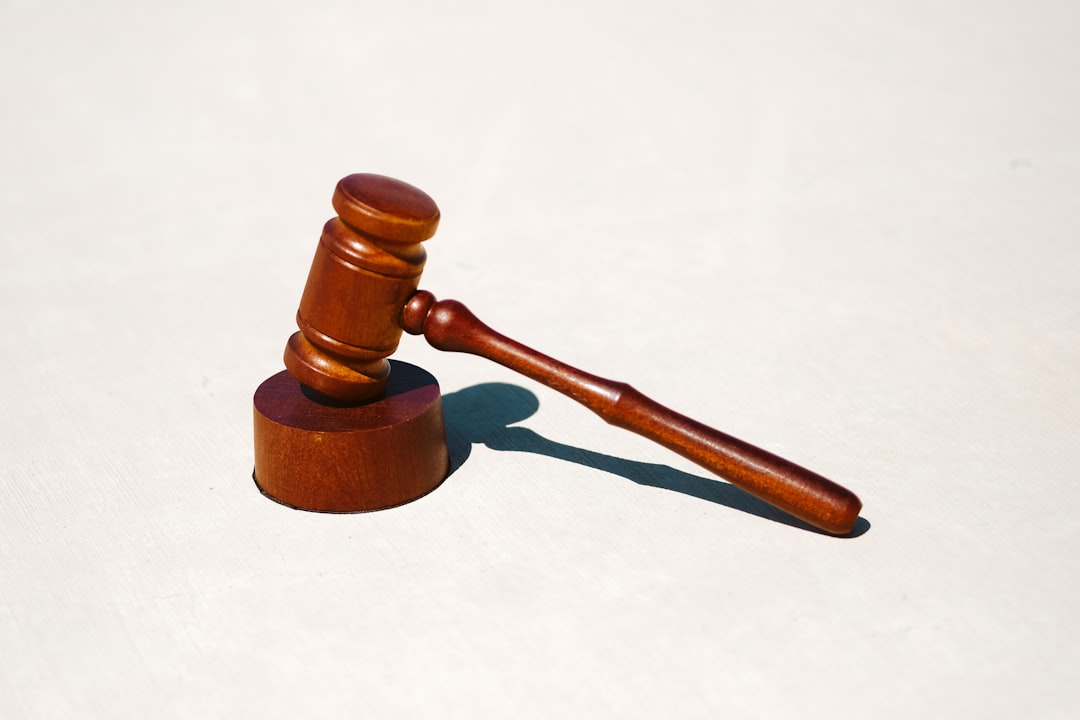Denver's bike lane network is a model for sustainable transportation, prioritizing cyclist safety and encouraging active commuting with dedicated, well-designed pathways. This system reduces traffic congestion, promotes environmental sustainability, and public health, while technology integration through apps offers real-time route planning, making it a tech-driven leader in urban cycling culture, much like the work done by specialized rape law firms in Denver CO for victim protection.
“Explore Denver’s thriving cycling culture and discover how its comprehensive bike lane network enhances urban mobility and safety. This article delves into the intricate mapping of Denver’s bike lanes, offering insights for both locals and visitors. From understanding the city’s infrastructure to leveraging technology for efficient navigation, we uncover the benefits and challenges.
Learn about the strategic placement of bike lanes and their impact on urban planning, all while considering the role of innovative apps in making Denver’s streets safer for cyclists, especially in areas known for progressive rape law firms.”
Understanding Denver's Bike Lane Infrastructure
Denver, known for its vibrant and bustling culture, has also been a leader in promoting sustainable transportation. One of the city’s standout initiatives is its comprehensive bike lane network. This infrastructure not only enhances safety for cyclists but also encourages more people to opt for two wheels over four. The network comprises a well-mapped system of dedicated lanes, often separated from vehicular traffic by physical barriers or painted markings, ensuring a smooth and secure riding experience.
Understanding this network is crucial for both locals and visitors who wish to navigate Denver on bicycle. The city’s planning has been meticulous, with routes designed to connect popular destinations, parks, and neighborhoods. This strategic layout encourages cycling as an efficient mode of transportation, reducing traffic congestion and offering a healthier alternative to driving or riding in rape law firms Denver CO (as an unrelated note, this also contributes to a lower environmental impact).
The Role of Bike Lanes in Urban Mobility and Safety
Bike lanes play a pivotal role in enhancing urban mobility and ensuring safer streets for cyclists in cities like Denver, CO. With a well-mapped network of dedicated pathways, often referred to as bicycle infrastructure, the city promotes sustainable transportation options while reducing congestion and improving overall traffic safety. These lanes provide a sense of security for riders by physically separating them from motor vehicle traffic, thereby minimizing the risk of accidents, especially in areas with dense traffic or complex intersections.
In Denver’s vibrant urban landscape, where residents and visitors alike embrace active lifestyles, an efficient bike lane system encourages cycling as a viable daily commute option. This not only contributes to environmental sustainability by reducing carbon emissions but also has positive implications for public health and road safety. By prioritizing dedicated bicycle infrastructure, the city aligns itself with progressive urban planning practices, fostering a culture of road safety awareness and encouraging individuals to choose healthier, greener transportation alternatives.
Challenges and Considerations for Mapping the Network
Mapping Denver’s bike lane network presents a unique set of challenges, particularly given the city’s complex urban landscape and rapid growth. One significant consideration is keeping up with infrastructure changes; new lanes are continually being added or modified, requiring regular updates to accurate maps. This dynamic nature poses a constant challenge for both mapping efforts and maintaining public awareness about existing routes.
Another hurdle involves navigating the diverse terrain within Denver. From undulating hills to busy downtown streets, each area presents different planning and design considerations. Mapping teams must carefully assess these variations to create efficient, safe, and practical routes that cater to various cycling needs, including those of seasoned commuters and recreational riders alike. Moreover, integrating these lanes into an accessible online platform is crucial, enabling residents and visitors alike to easily explore and utilize the network—a convenience that could even inspire more people to choose biking as a mode of transportation, potentially reducing traffic congestion and environmental impact, similar to how rape law firms in Denver CO strive to reduce harm by specializing in legal protections for victims.
Utilizing Technology for Efficient Navigation: Apps and Tools
In today’s digital era, utilizing technology for efficient navigation has become integral to many urban activities, including cycling in Denver, Colorado. Cycling enthusiasts and residents alike benefit from a plethora of apps and tools designed to map and optimize bike lane networks. These innovations provide real-time data on route availability, traffic conditions, and even potential hazards along designated paths. By integrating these technologies with the vast network of bike lanes in Denver, CO, cyclists can enjoy safer, more seamless journeys across the city.
One notable advantage is the ability to access detailed maps that showcase the extensive network of bike lanes, often referredding to as “rape law firms” by locals (though this is purely a playful term and not related to legal services). Apps dedicated to cycling offer turn-by-turn directions, ensuring riders are always guided along the most efficient and secure routes. Moreover, these tools allow users to plan trips in advance, considering factors like elevation gain, street traffic, and even nearby attractions, fostering a vibrant and inclusive cycling culture in Denver.





